If you want to invest using Exchange-Traded Funds (ETFs), this post covers some of the best Canadian ETFs you can buy and hold.
The iShares S&P /TSX 60 Index ETF (XIU.TO) was the very first ETF launched in Canada in 1990, and the industry has come a long way since then.
As of January 2024, Canadian ETF assets exceeded $367 billion, and there has been an increasingly steady inflow of cash to ETFs in recent years. Overall, 1,075 ETFs trade on Canadian markets.
ETFs are popular for many great reasons.
Like stocks, you can purchase an ETF easily using an online brokerage platform at the price it is selling for (intraday price) when you place your order.
Similar to mutual funds, they offer easy diversification by holding hundreds to thousands of securities. They are also a cost-effective option for lowering the risk level of your portfolio compared to investing in individual stocks.
Compared to mutual funds, ETFs are often cheaper and can save you money over time in investment fees.
We should note that ETFs are by no means risk-free, and you should do your due diligence before investing.
Best ETFs in Canada for 2024
I have categorized the best Canadian ETFs for 2024 into:
- Best Canadian all-in-one ETFs
- Best Canadian Equity ETFs
- Best U.S. Equity ETFs
- Best Bond ETFs in Canada
- Best International Equity ETFs
- Best Canadian Dividend ETFs
- Best Gold ETFs in Canada
- Best Canadian Bank ETFs
- Best REIT ETFs in Canada
Given that there are now over 1,000 ETFs listed on Canadian exchanges, choosing the best ETFs is a big challenge.
In general, the best ETF in Canada for you depends on your risk tolerance, investment objectives, and your overall finances.
For example, if you are not dependent on the income generated from your portfolio to pay for day-to-day expenses and are looking at a 15-30 year investment time frame, a growth portfolio with a higher-than-average risk profile may work for you.
On the other hand, if you are close to retirement, you may want to go easy on the volatility and opt for a conservative or balanced portfolio.
Below, I cover several ETFs that, in my opinion, occupy top placements in different categories for ETFs in Canada.
Since there is no “one size fits all” approach to investing, you should do your own research or work with an investment advisor to determine what best suits your needs.
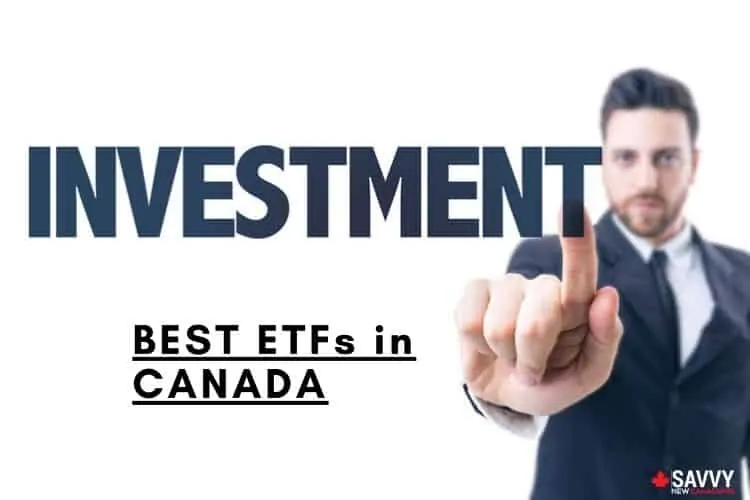
Best All-in-One ETFs in Canada
All-in-One or asset allocation ETFs are my newly found favourites.
They eliminate the need for manual rebalancing and already have your risk tolerance in mind. They are also globally diversified.
While I’m biased toward Vanguard-issued funds, the asset allocation ETFs by iShares and BMO are just as good (in my opinion).
1. Vanguard Growth ETF Portfolio (VGRO)
VGRO is designed for investors who are seeking long-term capital growth. It has a 4:1 equity-to-fixed income asset allocation ratio and exposes you to 13,643 stocks and 18,606 bonds as of June 2023.
While Vanguard rates the volatility of this ETF as “low to medium” you should expect to see a lot more volatility than an ETF with a higher bond weighting.
Comparable all-in-one growth ETFs are the iShares Core Growth ETF portfolio (XGRO) and BMO Growth ETF (ZGRO).
VGRO is one of the top TSX-listed ETFs you can consider in 2024. A few key facts for VGRO include:
- Ticker symbol: VGRO
- Inception date: January 25, 2018
- MER: 0.24%
- Asset allocation: 80% stocks; 20% bonds
- Net assets: $3.96 billion (June 2023)
The underlying ETFs make up VGRO.TO as of June 2023, are:
| VGRO ETF Holdings | Allocation |
| Vanguard US Total Market Index ETF | 35.43% |
| Vanguard FTSE Canada All Cap Index ETF | 23.01% |
| Vanguard FTSE Developed All Cap ex North America Index ETF | 16.35% |
| Vanguard Canadian Aggregate Bond Index ETF | 11.66% |
| Vanguard FTSE Emerging Markets All Cap Index ETF | 5.55% |
| Vanguard Global ex-US Aggregate Bond Index ETF CAD-Hedged | 4.11% |
| Vanguard US Aggregate Bond Index ETF CAD-Hedged | 3.90% |
Learn more about VGRO in this VGRO ETF review.
2. Vanguard Balanced ETF Portfolio (VBAL)
If you are looking for a lower volatility ETF portfolio that offers both long-term capital growth and some income, this balanced ETF, VBAL, may work for you.
This ETF targets a 3:2 stock-to-bond ratio. It is rated as a “low to medium” risk by Vanguard and may be suited to investors with average risk tolerance.
Comparable all-in-one balanced ETF portfolios in Canada are iShares Core Balanced ETF Portfolio (XBAL) and BMO Balanced ETF (ZBAL).
Funds facts for VBAL include:
- Ticker symbol: VBAL
- Inception date: January 25, 2018
- MER: 0.24%
- Asset allocation: 60% stocks; 40% bonds
- Net assets: $2.36 billion (as of June 2023)
The ETFs which make up VBAL.TO as of June 2023, are:
| VBAL ETF Holdings | Allocation |
| Vanguard US Total Market Index ETF | 26.41% |
| Vanguard Canadian Aggregate Bond Index ETF | 23.05% |
| Vanguard FTSE Canadian All Cap Index ETF | 17.80% |
| Vanguard FTSE Developed All Cap ex North American Index ETF | 12.09% |
| Vanguard Global ex-US Aggregate Bond Index ETF CAD-Hedged | 8.42% |
| Vanguard US Aggregate Bond Index ETF CAD-Hedged | 7.96% |
| Vanguard FTSE Emerging Markets All Cap Index ETF | 4.27% |
Find out more in this VBAL review.
3. Vanguard ALL-Equity ETF Portfolio (VEQT)
If you are comfortable tying up all your investments in 100% stocks, VEQT makes it easy.
As you would expect, this fund of funds is more volatile than both VGRO and VBAL and is given a “medium” risk rating by Vanguard.
I’d say your risk tolerance should be well above-average, and you should be thinking long-term if you plan to buy VEQT.
As of June 2023, an investment in VEQT exposes you to 13,643 stocks.
VEQT fund facts:
- Ticker symbol: VEQT
- Inception date: January 29, 2019
- MER: 0.24%
- Asset allocation: 100% stocks
- Net assets: $2.6 billion (as of June 2023)
iShares offers a comparable ETF called iShares Core Equity ETF Portfolio (XEQT).
The ETFs making up VEQT are:
- Vanguard US Total Market Index ETF
- Vanguard FTSE Canada All Cap Index ETF
- Vanguard FTSE Developed All Cap ex North America Index ETF, and
- Vanguard FTSE Emerging Markets All Cap Index ETF
Best Canadian Equity ETFs
There are ETF options tracking the different Canadian indices, including the S&P/TSX 60, S&P/TSX Capped Composite Index, and FTSE Canada All Cap Domestic Index.
For this review, my top picks for Canadian Equity ETFs are VCN.TO and ZCN.TO.
1. Vanguard FTSE All Cap Index ETF (VCN)
VCN provides exposure to large, mid, and small-cap companies in Canada. It holds 179 stocks and has a low MER of 0.05%.
The average annual return for VCN since its inception is 7.51% (as of June 2023).
- Ticker symbol: VCN
- MER: 0.05%
- Inception date: August 2, 2013
- Net assets: $5.24 billion (June 2023)
The top-5 stock holdings for VCN as of June 2023 are:
| VCN Equity Holdings | Allocation |
| Royal Bank of Canada | 6.36% |
| Toronto-Dominion Bank | 5.22% |
| Enbridge, Inc | 3.61% |
| Canadian Pacific Kansas City Ltd. | 3.59% |
| Canadian National Railway Co. | 3.39% |
2. BMO S&P/TSX Capped Composite Index ETF (ZCN)
This equity ETF includes 231 stocks that constitute 95% of the Canadian equity market. It is designed to replicate the returns of the S&P/TSX Capped Composite Index, net of fees.
The average annual performance of ZCN.TO since its inception is 7.12% (as of June 2023).
- Ticker symbol: ZCN
- MER: 0.06%
- Inception date: May 29, 2009
- Net assets: $6.8 billion (June 2023)
The top-5 stock holdings for XIC.TO as of June 2023 are:
| XIC Equity Holdings | Allocation |
| Royal Bank of Canada | 6.09% |
| Toronto-Dominion Bank | 5.20% |
| Shopify Inc | 3.55% |
| Enbridge Inc. | 3.45% |
| Canadian Pacific Kansas City Railway Ltd | 3.45% |
Best U.S. Equity ETFs
If you are building your ETF portfolio, you would likely want some U.S. equity exposure to benefit from growth in the world’s largest economy. This also increases your diversification.
My top picks for U.S. equity ETFs for Canadian investors are VFV and XUU.
1. Vanguard S&P 500 Index ETF (VFV)
VFV tracks the performance of the S&P Index and provides exposure to the largest-capitalization stocks in the United States.
This fund has returned an average of 15.89% per year since its inception as of June 2023.
- Ticker symbol: VFV
- MER: 0.09%
- Inception date: November 2, 2012
- Net Assets: $7.58 billion (as of June 2023)
The top-5 stock holdings for VFV.TO as of June 2023 are:
| VFV Equity Holdings | Allocation |
| Apple Inc. | 7.5% |
| Microsoft Corp. | 6.95% |
| Amazon.com Inc. | 3.06% |
| NVIDIA Corp | 2.65% |
| Alphabet Inc. Class A | 2.08% |
XUU gives investors exposure to the entire US stock market, and it is designed to provide long-term capital growth.
It tracks the S&P Total Market Index and had an average annual return of 11.07% since its inception as of June 2023.
- Ticker symbol: XUU
- MER: 0.08%
- Inception date: February 10, 2015
- Net assets: $2.36 billion (June 2023)
XUU comprises the following underlying ETFs (comprising 3298 stocks).
| XUU ETF Holdings | Allocation |
| iShares Core S&P ETF (IVV) | 48.50% |
| IShares Core S&P Total U.S. Stock (ITOT) | 44.69% |
| IShares Core S&P Mid-Cap ETF (IJH) | 3.01% |
| iShares Core S&P Small Cap ETF | 1.24% |
Here’s a detailed XUU review.
Best Bond ETFs in Canada
Bonds (fixed-income assets) help to moderate the volatility (risk) of your portfolio. As your risk tolerance decreases, the portion of your portfolio held in fixed-income securities and cash should increase.
One strategy is to hold your age in bonds. For example, if you are 50 years old, you may want to hold up to 50% in bonds and the remainder in stocks.
This is not a golden rule by any means, and a 50-year-old individual may tweak their asset allocation up or down depending on several other factors, including their life expectancy and returns expectations.
My top picks for Canadian bond ETFs are ZAG and VAB.
1. BMO Aggregate Bond Index ETF (ZAG)
ZAG represents the broad Canadian bond market and consists of investment-grade federal, provincial, and corporate bonds.
It aims to replicate the returns of the FTSE Canada Universe XM Bond Index, and its average annual return since its inception is 2.56%.
- Ticker symbol: ZAG
- MER: 0.09%
- Inception date: January 19, 2020
- Net assets: $6.38 billion (June 2023)
ZAG consists of a mix of 1,482 bonds and government and corporate bonds of varying maturities.
2. Vanguard Canadian Aggregate Bond Index (VAB)
This fund tracks the performance of the Bloomberg Barclays Aggregate Canadian Float Adjusted Bond Index.
VAB invests in government and corporate investment-grade bonds. It has provided an average annual return of 1.89% since its inception (as of June 2023).
- Ticker symbol: VAB
- MER: 0.09%
- Inception date: November 11, 2011
- Net assets: $4.08 billion (June 2023)
The top-10 holdings of this ETF are all various Government of Canada bonds. There is a total of 1,157 bonds held in this ETF.
Here’s a detailed VAB review.
Best International Equity ETFs in Canada
Similar to U.S. Equity ETFs, international equities add diversification to your portfolio and reduce home–country bias.
My top picks for international equity ETFs are XAW and VIU.
XAW offers diversification on a global basis by providing exposure to large, mid, and small-cap companies in developed countries (excluding Canada) and emerging markets.
Its average annual return since inception is 8.29% (as of June 2023).
- Ticker symbol: XAW
- MER: 0.22%
- Inception date: February 10, 2015
- Net assets: $1.899 billion (June 2023)
The ETFs underlying XAW (comprising 9,526 assets) as of June 2023 are:
| XAW ETF Holdings | Allocation |
| iShares Core S&P ETF (IVV) | 53.11% |
| IShares MSCI EAFE IMI Index (XEF) | 26.23% |
| IShares Core MSCI Emerging Markets (XEC) | 11.04% |
| IShares Core S&P Mid-Cap ETF (IJH) | 3.72% |
| IShares Core S&P Total U.S. Stocks (ITOT) | 3.64% |
| Shares Core S&P Small-Cap ETF (IJR) | 2.20% |
2. Vanguard FTSE Global All Cap ex Canada Index ETF (VXC)
Similar to XAW, VXC invests in small-large capitalization stocks of companies in developed and emerging markets, excluding Canada.
It seeks to trade the FTSE Global All Cap ex Canada China A Inclusion Index and has returned 9.38% on average per year since its inception in 2014.
- Ticker symbol: VXC
- MER: 0.21%
- Inception date: June 30, 2014
- Net assets: $1.45 billion as of June 2023
VXC held 11,508 equities as of June 2023.
One international Equity ETF that excludes Canada and the U.S. is VIU (Vanguard FTSE Developed All Cap ex North America Index ETF).
Best Canadian Dividend ETFs
If you envy dividend investors and want in on the action but do not feel you have the time to track (obsess over) individual stocks and analyze them, a Canadian dividend ETF could work for you.
While I personally prefer straightforward indexing (as a limited-attention-span type of guy), my top picks for the best dividend ETFs are ZDV and XEI.
XEI.TO is an iShares ETF that pays a monthly dividend income and aims to replicate the returns of the S&P/TSX Composite High Dividend Index. It currently offers a 12-month yield of 5.24% and has an MER of 0.22%.
Its top 5 holdings (75 in total) as of June 2023 are:
| XEI.TO Equity Holdings | Allocation |
| Toronto Dominion Bank | 5.24% |
| Royal Bank of Canada | 5.18% |
| Telus Corp | 5.13% |
| Canadian Natural Resources Ltd | 5.00% |
| BCE Inc | 4.95% |
2. BMO Canadian Dividend ETF (ZDV)
ZDV is designed for investors looking for regular income and long-term growth.
It comprises Canadian dividend-paying stocks, has an MER of 0.39%, and a dividend yield of 4.54%.
ZDV’s top-5 equity holdings (52 in total) as of June 2023 are:
| ZDV Equity Holdings | Allocation |
| Toronto Dominion Bank | 5.06% |
| Enbridge Inc | 5.00% |
| Royal Bank of Canada | 4.99% |
| Bank of Nova Scotia | 4.96% |
| BCE Inc | 4.80% |
Two other popular Canadian dividend ETFs are:
- iShares S&P/TSX Canadian Dividend Aristocrats Index ETF (CDZ), and
- Horizon Active CDN Dividend ETF (HAL)
Best Gold ETFs in Canada
Gold ETFs hold the physical bullion, or they may invest in stocks of gold mining companies. Some also use derivatives to gain exposure to the price performance of gold and related assets.
The best Canadian Gold ETFs include:
The iShares Gold Bullion ETF invests directly in gold bullion and offers exposure to the price of gold hedged to CAD.
Its key metrics as of June 2023 include:
- Ticker symbol: CGL
- MER: 0.55%
- Inception date: May 28, 2009
- Net assets: $747 million as of June 2023
CGL has returned an average of 3.79% since its inception in 2009.
Unlike CGL, this ETF provides exposure to the stocks of companies that mine gold and related products. It aims to replicate the performance of the S&P/TSX Global Gold Index, after deducting fees.
Key metrics for XGD.TO as of June 2023 include:
- Ticker symbol: XGD
- MER: 0.61%
- Inception date: March 23, 2007
- Number of holdings: 41
- Net assets: $995 million as of June 2023
Learn more about XGD in this review.
Best Canadian Bank ETFs
While many of the best ETFs in Canada already hold bank stocks, you may prefer to dial in on the top 6 banks for their dividend yields. Also, instead of buying individual bank stocks, an all-in-one solution ETF may be preferable.
The best bank ETFs in Canada include:
1. BMO Equal Weight Banks Index ETF (ZEB)
ZEB is for investors looking to gain exposure to several Canadian bank stocks in one portfolio. It tracks the performance of the Soloactive Equal Weight Canada Banks Index.
Key metrics for ZEB include:
- Inception date: October 20, 2009
- MER: 0.28%
- Top holdings: TD, BNS, BMO, RY, CM, and NA
- Net assets: $4.057 billion as of June 2023
- Dividend yield: 5.19%
XFN.TO invests in Canada’s financial sector while trying to replicate the performance of the S&P/TSX Capped Financials Index.
This ETF holds 29 different Canadian bank stocks and has provided an 8.89% average annual return since its inception in 2001.
Its key metrics as of June 2023 include:
- Inception date: March 23, 2001
- MER: 0.61%
- Net assets: $1.34 billion as of June 2023
- Dividend yield: 3.60%
Best REIT ETFs in Canada
You can invest in the Canadian real estate sector without buying physical properties by using REITs (Real Estate Investment Trusts).
Some of the best REIT ETFs in Canada include:
- FTSE Canadian Capped REIT Index ETF (VRE)
- BMO Equal Weight REITs Index ETF (ZRE)
- CI Canadian REIT ETF (RIT)
- iShares S&P/TSX Capped REIT Index ETF (XRE)
Best Crypto (Bitcoin) ETFs in Canada
Alternative investments, including those that offer exposure to cryptocurrencies, may or may not fit into your portfolio. These high-risk assets require you to have above-average risk tolerance.
The best crypto ETFs in Canada include:
- Purpose Bitcoin ETF (BTCC)
- CI Glalaxy Ethereum ETF (ETHX)
- Evolve Cryptocurrencies ETF (ETC)
- 3iQ CoinShares Bitcoin ETF (BTCQ)
Learn more about Bitcoin and Ethereum ETFs.
How To Create an ETF Portfolio in Canada
If you are not using an all-in-one ETF solution, you could combine two or more of the ETFs listed to make up a portfolio that meets your needs.
For example, if you want a growth portfolio with an 80% equity to 20% allocation, you could use:
- VAB (bond/fixed income): 20%
- VCN (Canadian equities): 30%
- VFV (U.S. Equities): 30%
- VIU (International equities): 20%
The total MER for this sample portfolio is 0.107%, which is lower than the 0.25% MER for VGRO.
Of course, this example is entirely hypothetical, and you could easily vary the allocations or even mix Vanguard, iShares, BMO, and other funds together.
You can also use fewer funds to design your desired portfolio.
Compared to an all-in-one ETF portfolio, the one shown in the sample above will require rebalancing, and your fees will add up over time, eroding or eclipsing the fee savings when compared to one-stop ETFs.
This is why I keep mine simple with a one-solution fund.
What is an ETF?
An ETF is a basket of securities combined into one fund and traded on a stock exchange similar to stocks. ETFs can hold stocks, bonds, commodities, precious metals, currencies, and other assets.
They are designed to track an investment index such as the S&P/TSX 60 or S&P 500 and are expected to provide a return similar to that of the benchmark index.
Most ETFs are passively managed (like index funds) and have some of the lowest MERs and fees compared to mutual funds.
Types of ETFs
Depending on the investments held by an ETF, its focus on specific industries or sectors, its investment management style, and its use of derivatives, an ETF may be classified as:
- Stocks ETFs
- Bond ETFs
- Commodity ETFs
- Industry/Sector-specific ETFs
- International ETFs
- Actively Managed ETFs
- Alternative ETFs
- Covered Call ETFs
- Smart Beta ETFs and more
There are 37 ETF providers in Canada, including Vanguard Investments Canada Inc., BMO Asset Management, BlackRock Canada, and Horizons ETFs Management (Canada) Inc.
How To Buy ETFs in Canada
One of the advantages of ETFs is the ease with which you can get them.
To start investing in ETFs, you can open a brokerage account or invest using a robo-advisor.
Buy ETFs Using a Brokerage Account
Self-directed investors can use a brokerage platform to buy and sell stocks, ETFs, mutual funds, options, and other investment products.
While all the major banks in Canada offer online trading accounts, you could save on fees by using an independent broker, e.g. Wealthsimple Trade or Questrade.
Questrade: This is Canada’s best independent brokerage platform. It offers free ETF purchases, and when you sell, a $4.95 to $9.95 fee applies per trade.
You can use Questrade to trade stocks, ETFs, options, currencies, mutual funds, GICs, and bonds at competitive fees for the industry.
Accounts offered include RRSP, TFSA, RRIF, LIF, RESP, margin, and corporate (business) accounts.
You need a minimum balance of $1,000 to start trading on Questrade, and new clients get $50 in free trades.
Questrade
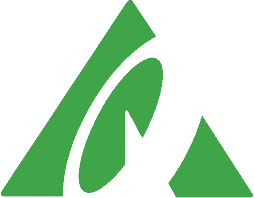
Trade stocks, ETFs, options, FX, bonds, CFDs, mutual funds, etc.
Get $50 trade credit with $1,000 funding
Low and competitive trading fees
No quarterly inactivity fees
Access to advanced tools and trading data
Top platform for advanced traders
Transfer fees waived
Wealthsimple Trade: You can use this platform to trade thousands of stocks and ETFs listed on Canadian and U.S. stock exchanges for free.
It does not have a minimum balance requirement, making it one of the best discount brokerage options for beginners. It is also the only platform for fractional share trading in Canada.
Wealthsimple Trade offers personal non-registered, TFSA, and RRSP accounts. When you open a funded account and deposit $200 or more, you get a $25 cash bonus.
Wealthsimple Trade

Trade stocks, ETFs, and options
Excellent trading platform for beginners
Deposit $150+ to get a $25 cash bonus
Transfer fees waived up to $150
When you use an online discount broker, you are in control of your portfolio and are responsible for ensuring it remains rebalanced.
You typically won’t have access to financial advice and should be comfortable with doing your own research.
If you’d rather not take on this responsibility, consider using the services of a robo-advisor.
Buy ETFs Using a Robo-Advisor
Robo-advisors are online wealth management firms that utilize low-cost ETFs in creating your investment portfolio.
These financial technology companies offer benefits including:
- Automatic rebalancing so you don’t have to worry about doing it manually
- Free financial advice
- Customized portfolios to suit your risk tolerance
- Dividend re-investing and tax-loss harvesting
In exchange for these benefits, you pay a small management fee on top of the ETF’s in-built fees.
The best robo-advisors in Canada are Questwealth and Justwealth:
Questwealth

Professionally managed ETF portfolios
Multiple accounts & low fees
Auto rebalancing and div reinvesting
Invest $10K free in 1st year
Pros and Cons of ETFs in Canada
ETFs have simplified the investing process and made it easier than ever to become a do-it-yourself investor and not feel like you are leaving significant returns on the table.
Below are some of the advantages and disadvantages of ETFs:
Pros of ETFs:
- Diversification: ETFs give you exposure to hundreds or thousands of investment products, and your portfolio can be globally diversified using only one or a few ETFs.
- Liquidity: Similar to stocks, you can easily buy and sell most ETFs whenever you want as long as the stock market is open.
- Lower fees: Compared to mutual funds, you pay a lower management expense ratio (MER) for ETFs. For example, the average MER for equity mutual funds is approximately 1.98%; however, you can find Equity ETFs with MER as low as 0.05%.
- Transparent: ETF asset holdings are published daily, so you know what securities are being held and in what proportion.
Cons of ETFs
- Transaction fees: If you are trading small amounts of ETFs on a regular basis and paying commissions, your transaction fees add up and may erode your returns over time. You can limit your fees by using a no-commission broker.
- Lack of control: Investors have no say over the assets held by an ETF. If you prefer to avoid a specific stock for any reason, you may have to avoid the fund entirely, even if all its other holdings are to your taste.
- Tracking error: An ETFs return may differ from the return of its benchmark index due to fees, cash holdings, the timing of rebalancing, etc.
ETFs vs. Mutual Funds
ETFs and mutual funds provide investors with diversification, and index mutual funds try to replicate the performance of an index, just like most ETFs.
They are different in some respects:
Trading: ETFs can be bought and sold during the trading day at the current market price. Mutual funds can be traded based on the net asset value (NAV) calculated at the close of the day.
Cost: Mutual funds are generally more expensive than ETFs because the fund managers use an active management style with the intent to generate above-market returns. While they rarely achieve this goal, investors end up paying for the increased activity via the management expense ratio.
Taxes: ETFs are generally more tax-efficient than mutual funds. Increased buy-and-sell transactions by mutual funds may result in capital gains distributions outside of your control.
Account minimum: Some brokerage platforms have a $1 minimum balance to open an account and start trading. In many cases, you need at least $500 to open an account and purchase mutual funds.
Conclusion
If you are looking for the best ETFs to buy in Canada, we have listed a few of the top options.
Questrade offers free ETF purchases and low competitive fees when you sell. It supports multiple investment assets and provides access to advanced trading tools.
To save on fees, check out Wealthsimple Trade, where you can purchase thousands of stocks and ETFs commission-free.

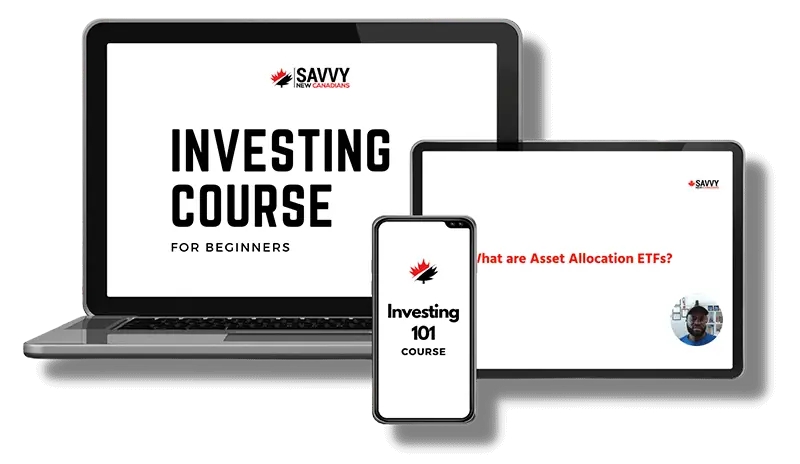


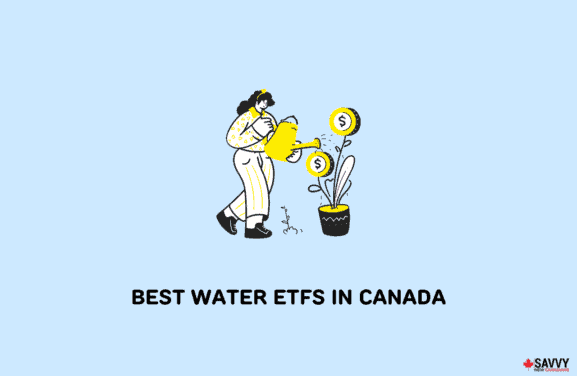

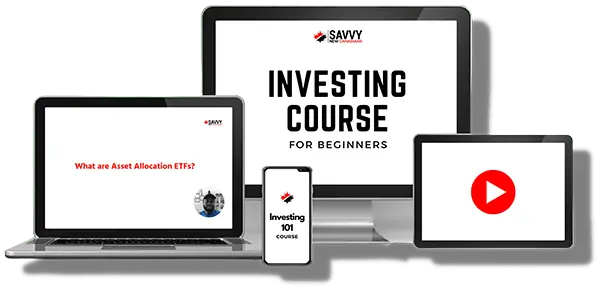

Very interesting article, leaving me to ponder restructuring my investment portfolio. I have a hypothetical question regarding insolvency. When I invest through an investment broker (like TD Direct or Scotia iTrade), they are members of Canadian Investor Protection Fund (CIPF). If the investment broker goes bust, then CIPF will work to get my investments back or transferred from the insolvent broker. If I place all my money into a single all-in-one Vanguard ETF vehicle (through my brokerage firm), what happens to my investment if Vanguard Canada (investment firm) becomes insolvent? Vanguard Canada does not appear to be a CIPF member.
@Andrew: Funds like Vanguard are required to keep your money with a third-party custodian. From a quick scan online, it appears that the custodian for Vanguard Canada Funds is State Street Trust Company Canada. I don’t know who insures this company.
Also, re. CIPF and insolvent firms, this is what it says on their website:
“Since an insolvent firm cannot service your account, your account will need to be transferred. If your account has been transferred by the insolvency official to a new firm, information about the transfer will be communicated to you by the insolvency official. In our experience, you are normally given the choice of where to move your account. In some cases though, the insolvency official may tell you after the transfer has occurred.”
https://www.cipf.ca/cipf-coverage/when-a-member-is-insolvent
Great write up. Easy to understand for a beginner investor like myself. This helped me narrow down my ETF choices. Thank you.
@Kevin: That’s great to hear. Cheers!
Hi Enoch, what’s your opinion on Market Orders vs. Limit Orders? I want to use the one that allows me to pay the lowest fees every single time but I don’t think I am considering the whole picture. I don’t feel like I have enough background knowledge to decide. In your experience, what are important things to consider when choosing Market vs Limit Orders when buying ETFs with Questrade? I care about the cheapest price but I also care about the least amount of stress and decision making. My investing style should be simple with the least number of steps each time.
@Alton: Both order types have the same fees since you are paying per transaction (free when buying ETFs but a $4.95 to $9.95 fee when you sell). Limit orders are useful when you want to buy or sell an asset at a specific price. For market orders, your orders are filled instantly (or almost instantly) at the prevailing price. If you don’t want to keep chasing the market (e.g. you have a limit order that does not get filled and you have to edit it to reset your price), then market orders are best. If you are set on a specific price or better, then limit orders help in this regard.
Hi Enoch. What are your thoughts on the newly launched Harvest ETF HDIF or a soon to be retiree? It has good diversification, a nice monthly payout and reasonable costs for the strategy they use. The underlying ETF holdings have a good track record.
@John: Sorry, I haven’t had a chance to review this ETF yet, so can’t comment on its suitability.
Thanks Dr. Omololu. In your opinion, is placing a Limit Order kind of like timing the market because you are waiting for a particular price? And is placing a Market Order like “time in the market” — which is more important than “timing the market” for a certain price? What do you think of this?
@Alton: Good analogy on both points! Both order types are useful and I wouldn’t stress too much about which one I use as long as I have done my research on the assets being traded. To combat behavioural biases, market orders are probably the best way to go most times.
Great article, Enoch. Immensely helpful for someone like me who is new to Canada and just starting with investments. May I ask what is your go-to resource for ETF comparison/tracking? I tried Morningstar but don’t know to filter Canadian ETFs.
Thanks,
Saurabh
@Saurabh: Glad to hear you have found the site useful.
It would depend on what data you are looking for. A few examples include:
https://www.fundata.com/Analytics/Etfs.aspx
https://etfmarket.neo.inc/en/etf-screener
https://money.tmx.com/en/etf-screener
https://etfdb.com/screener/
https://cetfa.ca/ETF_Screener.html
https://fknol.com/ca/etf/screener.php
Hi Enoch,
I would like to copy XGRO/VGRO as close as possible on a 1.1M portfolio using a 4 fund ETF. Your thoughts in the following:
VCN 25%
XUU 25%
ZAG 25%
XAW 25%
Thanks
Alex
@Alex: Why would you go for 4 ETFs when you can buy one and avoid the need to rebalance?
You would be duplicating many holdings with XAW+XUU.
Exactly the idea to hold to hold 40% U.S exposure.